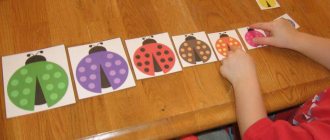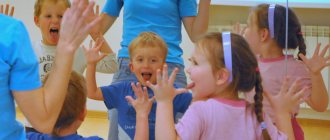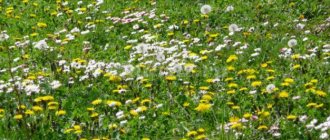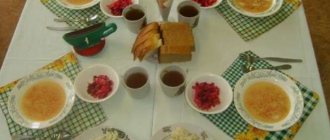Methods and techniques for teaching drawing
Elvera Batyrova
Methods and techniques for teaching drawing
Consultation on the topic:
Methods and techniques for teaching drawing
Passing the material Methods and techniques of teaching
Early development group. In the first half of the year, children learn, coordinating hand movements, to purposefully draw lines in the form of arcs , lines of a spiral nature.
In the second half of the year, children learn the simplest images, outlining certain didactic tasks, learn to rhythmically apply strokes of bright color on paper. Showing how to use pencils and paints
Passive movements - the child does not act independently, but with the help of the teacher
Reading nursery rhyme poems and songs in the classroom is the most important methodological technique - it increases the positive, emotional attitude of children to the lesson, contributes to the formation of a figurative idea of what is being depicted
Junior group. In the first quarter, children must master images of objects , using the ability to draw straight and rounded lines.
In the second quarter, consolidating the skills of depicting various objects consisting of combinations of lines (trees, Christmas trees, a checkered scarf)
In the third quarter, learning in a new formative movement aimed at conveying rectangular objects .
In the fourth quarter, children draw objects of familiar shapes, mainly drawing by design . drawing classes are actively used
information-receptive method . Especially useful before class
an effective way to get to know the shape of an object: children trace the shape with their hand,
play with flags, balls, balls, feel their outlines. This
examination of an object creates a more complete picture of it.
Also effective is the technique of examining an object by moving your hand along the contour and showing this movement in the air. Direct demonstration of the image method is used only if this form is encountered for the first time.
Middle group. In the first quarter, children consolidate the knowledge acquired earlier and learn to draw oval and round objects, as well as distinguish between them.
In the second quarter, children learn to distinguish and draw round , oval, triangular, and rectangular shapes. Develop aesthetic perception and taste.
painting classes are introduced in the third quarter . The elements of the pattern are studied.
In the fourth quarter, new material is not provided; previously acquired knowledge is consolidated and used freely. In the middle group, to better reproduce the image a visual method ; a picture or drawing by the teacher can be used. Demonstration of drawing in the middle group continues to occupy a significant place in teaching in those classes where new program material is given: the sequence of depicting parts of an object, the concept of rhythm, pattern, etc.
Senior group. In the first quarter, children consolidate the knowledge, skills and abilities acquired earlier. Next, in the older group, children draw a person
Collective work will be introduced in the second quarter
In the third quarter, along with depicting objects, children learn to draw animals and improve the depiction of the human figure.
In the fourth quarter, children learn to independently reflect impressions received from the environment. The method of showing a child how to draw is used widely, but only in relation to technical problems: how to hatch, how to paint, how to hold a brush and arm, etc.
Preparatory group. The first quarter provides for both new knowledge and skills and consolidation of previously acquired ones. Activities based on children’s ideas and illustrating fairy tales are also used.
In the second quarter, decorative drawing ; it is based mainly on decorating things made of paper, cardboard, and sculpted from clay.
In the third quarter, problems of an aesthetic nature are solved, children develop a sense of color and composition, and learn to expressively convey a plot and images. A visual method is to refer to a sample; study of the image object, showing the method of action; problematic issues and situations; creation of drawings based on the wide use of artistic words, game techniques, surprise moments, etc.
Methods and techniques for teaching drawing in all age groups.
FIRST JUNIOR GROUP
The most accessible type of art activity for children of this age is drawing . It is important to arouse interest in activities with pencils, paints, and felt-tip pens. Children should be drawn to the fact that a pencil, brush, or felt-tip pen will leave a mark on the paper if you run the sharpened end of a pencil or brush over it. It is advisable for the teacher, together with the child, to examine the results of actions with a pencil, brush, felt-tip pen, draw along the lines drawn on the paper with the fingers of one or the other hand, and ask what it is, what it looks like. At the same time, an adult should be patient and not insist on a quick answer. It is necessary for the child to gradually comprehend all this on his own. Children's statements about who drew should be encouraged without questioning. It is important to encourage children to complement the drawn and named image by asking questions like “Where is the fish’s tail?”
.
This will cause the child’s thoughts to work, the desire to give the drawing a resemblance to the object , to complement the image with details known to him. It is necessary to encourage children to consciously repeat previously obtained strokes and lines, which will lead to the conscious creation of an image. As children master drawing with pencils, you can give children paints and a brush.
Children should be encouraged to draw a variety of objects that surround them and attract attention while playing, observing while walking, looking at them, or tracing the outline of an object with their hands. It is advisable to draw with sticks on the ground , on the snow, or with chalk on a blackboard, encouraging children to act with one hand or the other. Drawing should be free, that is, you should not rush to teach children to depict objects of a certain shape . It has been noticed that children quickly form stereotypical actions and develop the habit of drawing only these objects and only in the way the teacher showed them. This narrows the subject matter of the images a child can create; as a result, even when children have the opportunity to draw freely , they will repeat what they learned earlier. A completely different picture emerges when children, from the very beginning, have the opportunity to freely reflect in the drawing what they want: the content of the drawings becomes more varied and interesting. Children depict such objects (a car, the sun, a doll, a bird, a fish, a hare, etc.), which, as a rule, do not work with the traditional method (when children are asked to draw lines and objects of a certain shape.
To successfully master drawing , it is important to develop the sensory foundations of visual activity: perception of objects of different shapes (visual, tactile, kinesthetic, colors, starting with contrasting colors (red, blue, green, black)
and gradually adding other
(without limiting the number)
colors, without requiring children to memorize the names of a large number of them, but the teacher himself must name them. This will enable children to recognize and remember more colors.
One of the main tasks of the teacher is to teach children to hold a pencil, brush, or felt-tip pen correctly: with three fingers, not very close to the sharpened end or nap, without squeezing them tightly with your fingers. For a child, this task is perceived as personally significant for him: a child of this age wants to learn everything is right to make it beautiful.
SECOND JUNIOR GROUP
Children of this age need to develop the ability to listen to the teacher, create an image given by him or invented by themselves, evaluate the resulting result, and enjoy it.
To improve visual skills, you should continue to develop perception: learn to isolate an object from the environment, trace it with your hands (either one or the other)
along the contour or clasp it with your hands to feel the volume
(this will help you understand the shape of the object and convey it in the image)
.
In the process of perceiving objects , the teacher encourages children to identify and name their shape (round, square, triangular, color; teaches them to distinguish and name at least five to six colors. As a result, children have a desire to choose an object of a certain shape, color, etc. should encourage the addition of a story to the created image, the desire to hear an adult evaluate their work, and show interest in the drawings of other children.At
this age, under the guidance of a teacher, children master the process of depicting objects of a linear nature (colored sticks, strings, paths consisting of a combination of lines (ladder, fence, tree, herringbone, as well as objects of round , rectangular, triangular shape.To do this, you need to teach children formative movements in drawing , for which it is very important to include the movement of the hand along the contour of the object when perceiving it, show and explain to children that with one movement you can draw an object or all its parts that have the same shape.This is how children are led to mastering generalized methods of representation.
Children of this age are taught to draw objects that have one part (they start with them)
or several parts.
The objects offered to children for depiction may be different. The teacher can present them, children can choose them themselves at will. This increases their interest and desire to take up drawing . Interest in drawing by the inclusion of fairy-tale images (bun, turnip, creation of game incentives. In classes, children should be encouraged to create several images in order to more easily remember drawing and then act more freely and confidently.
As a result of repeated images of the same and different objects The baby's hand becomes more and more skillful, confident and free, which allows him to create more complex images.
Successful mastery of artistic activities is impossible without the development of fine muscles of the fingers. Children need to be taught to hold a pencil and brush correctly, without straining their muscles, without squeezing their fingers, and to move their hands with a pencil and brush easily and freely; use all materials correctly and carefully when painting (learn to put paint on a brush, dipping it into the paint with all the bristles, remove an extra drop by lightly touching the edge of the jar with the bristles of the brush so that the drop does not fall on the paper and spoil the drawing).
Children of the fourth year of life must be taught to sit correctly, that is, upright, without bending too much over a sheet of paper, without resting their chest on the edge of the table (so that their vision does not deteriorate, breathing is not difficult, movement is not constrained, to hold a pencil and brush correctly: between the large and with the middle finger, holding it on top with the index finger, without squeezing the fingers too much, not too close to the sharpened end.
In the process of drawing, children 's activities must be accompanied by nursery rhymes, songs, riddles, and music. This will help develop their emotional responsiveness when perceiving pictures and illustrations. Children's attention must be paid to expressive means.
MIDDLE GROUP
Children of the fifth year of life should develop aesthetic perception, aesthetic figurative ideas, imagination, artistic and creative abilities, the ability to examine objects (including with hand movements in shape, name the shape, color (and its shades, size (as an object as a whole, and parts)
.
In one lesson, it is advisable to offer to draw not one , but several objects of the same shape . By depicting the same object several times, children involuntarily change their size and position in space and at the same time gain confidence and freedom of movement, which contributes to the manifestation of creativity. Techniques for carefully painting over a drawing with paints and pencils should be demonstrated. To do this, you can use not only children's drawings, but also special albums in which the child is faced with the following tasks - to complete the drawing draw something himself .
To learn how to paint beautifully, a child must understand: the movements of the pencil and brush cannot be random, the lines should be drawn in one direction - from top to bottom, from left to right, or obliquely. Subjects for drawing should be offered only taking into account the children’s impressions (what interesting things they saw, what they were read, what they were told, what cartoons they watched, etc.). You can invite them to draw what they themselves want (by design)
.In this case, children’s attention should be paid to the location of the images on a sheet of paper: below - a strip of earth, grass, snow, water, on the entire surface of the sheet - a forest clearing, sea, snow field, etc.
Children of the fifth year of life must be taught to perform all images diligently, carefully, to finish what they start, and to be happy with the result.
Children must continue to be taught how to hold a pencil and brush correctly, and how to use paints and pencils correctly (do not press hard on the pencil, but increase the pressure only to get a brighter shade).
SENIOR GROUP
The visual activity of 5-year-old children is becoming increasingly conscious and intentional. They begin to develop an interest in this activity. The child’s sensory experience is enriched, the ability to analyze perceived objects, compare them with each other, and establish similarities and differences develops. Children can already be taught to convey in an image not only the basic properties of objects , but also characteristic details, the ratio of parts in size relative to each other. It is necessary to learn this in order to learn how to depict characters and plots of fairy tales, pictures of nature, various buildings, animals, etc. In the process of perceiving objects and phenomena, children should pay attention to the fact that objects can be located differently on a plane and can change position . An adult must teach the child to detail everything perceived, including movements, and to pay attention to the position of parts of an object in space. To create expressive images, you need to continue to develop your perception of color. The development of a sense of color is facilitated by decorative drawing , images of flowers, fairy-tale birds, palaces, etc. In the older group, children’s attention should be paid to the fact that the position of the sheet of paper on which they create the drawing should correspond to the proportions of the depicted object: if the object is tall, the sheet of paper is better position it vertically, and if it is elongated, then the sheet should be positioned horizontally. This is the only way the drawing will look beautiful. By placing an image on a sheet of paper, children master the simplest compositional skills: they can already place images in one plane (on a strip at the bottom of the sheet, but it is much more difficult, but also more beautiful, to arrange images across the entire sheet of paper in two or three plans, conveying perspective. So that children have learned to quite freely depict any objects and phenomena that interest them in a drawing, they need to be introduced to different drawing , different visual materials.Children of the older group, when creating images, use previously acquired various skills to draw with a brush : wide lines - with the whole bristle, thin lines - with the end of the brush, strokes - by applying the entire bristle of the brush. Such techniques can be used both in subject and decorative drawing . It is important for children to develop such qualities of drawing movements as unity (continuous movement when drawing lines , then they turn out smooth, rhythmicity (uniform movement when drawing the same elements of the pattern, when painting over images, etc.).
PREPARATORY SCHOOL GROUP
Children of the seventh year of life in drawing classes depict objects , scenes, landscapes, and create decorative compositions. When teaching the transfer of a plot, the teacher draws the children’s attention to the location of objects in space in relation to each other (which is closer, what is further, the blocking of one object by another, the ratio of objects in size , color, etc.
In the preparatory group for school, teaching children technical and visual skills and abilities, on which the quality of visual images depends, as well as a positive emotional attitude towards drawing remain important. Children are reinforced with previously learned methods of depiction, continue to develop the ability to freely use a pencil when performing a linear drawing, are taught smooth turns of the hand when drawing rounded lines , curls in different directions, are taught to move the whole hand when drawing long lines , large shapes, using only fingers - when drawing small shapes and small details, short lines, strokes, grass (Khokhloma, Ozhivok (Gorodets)
and etc.
The teacher teaches children to notice the beauty of the created image, i.e. shape, smoothness, unity, thinness, elegance of lines, rhythmic arrangement of lines and spots, uniform shading of the picture, smooth transitions of color shades resulting from uniform shading and correct regulation of pressure on the pencil.
TECHNIQUES OF VISUAL ACTIVITIES FOR CHILDREN IN PRESCHOOL AGE
There are many non-traditional drawing techniques; their unusualness lies in the fact that they allow children to quickly achieve the desired result. The use of unconventional drawing methods evokes an abundance of positive emotions in children; makes it possible to use often unexpected objects as visual materials, surprising children with originality and unpredictability. Knowledge, skills, pedagogical tact enable the child to create his own picture of the world, and non-traditional drawing methods make the drawing beautiful, understandable, attract him and interest him. The idea of pedagogical experience is to develop the creative abilities of each child using non-traditional techniques, to help realize themselves, to be able to combine various materials in one drawing to obtain an expressive image.
Factors that allow me to prevent monotony and boredom in children's visual activities, ensuring the vividness and spontaneity of children's perception:
• diversity and variability of work with children;
• novelty of the environment;
• unusual start of work;
• beautiful and varied materials;
• interesting and non-repetitive tasks for children;
• choice.
The teacher’s task is to support children’s initiative, developing their creativity. The main task that confronted me regarding artistic and aesthetic development was not only the implementation of a personality-oriented approach to each child, but also the ability of children to work in pairs and collectively. This develops communicative qualities in children: the ability to negotiate, plan their work, and achieve results through joint efforts.
Working with children of senior preschool age, I noticed: children love to draw, diligently master the skills of working with various tools and visual materials, master individual techniques and methods of drawing, but when creating their own works, children’s visual and expressive skills remain at an average level, many compositions stand out for their scarcity content, stamps. There is no main thing - “our own”, sincere drawings, there is no creative approach, they do not reflect what is significant for the child drawing them. After analyzing the drawings of preschoolers, I came to the conclusion that it is necessary to facilitate drawing skills, because not even every adult will be able to depict any object. This can greatly increase preschoolers’ interest in drawing.
Every time I create a new situation so that children, on the one hand, can apply previously acquired knowledge, skills, abilities, and on the other hand, look for new solutions and creative approaches. This is what evokes in a child positive emotions, joyful surprise, and a desire to work creatively. I try to diversify both the color and texture of the paper, since this also affects the expressiveness of the drawings and confronts children with the need to select materials for drawing, think through the coloring of the future creation, and not wait for a ready-made solution.









